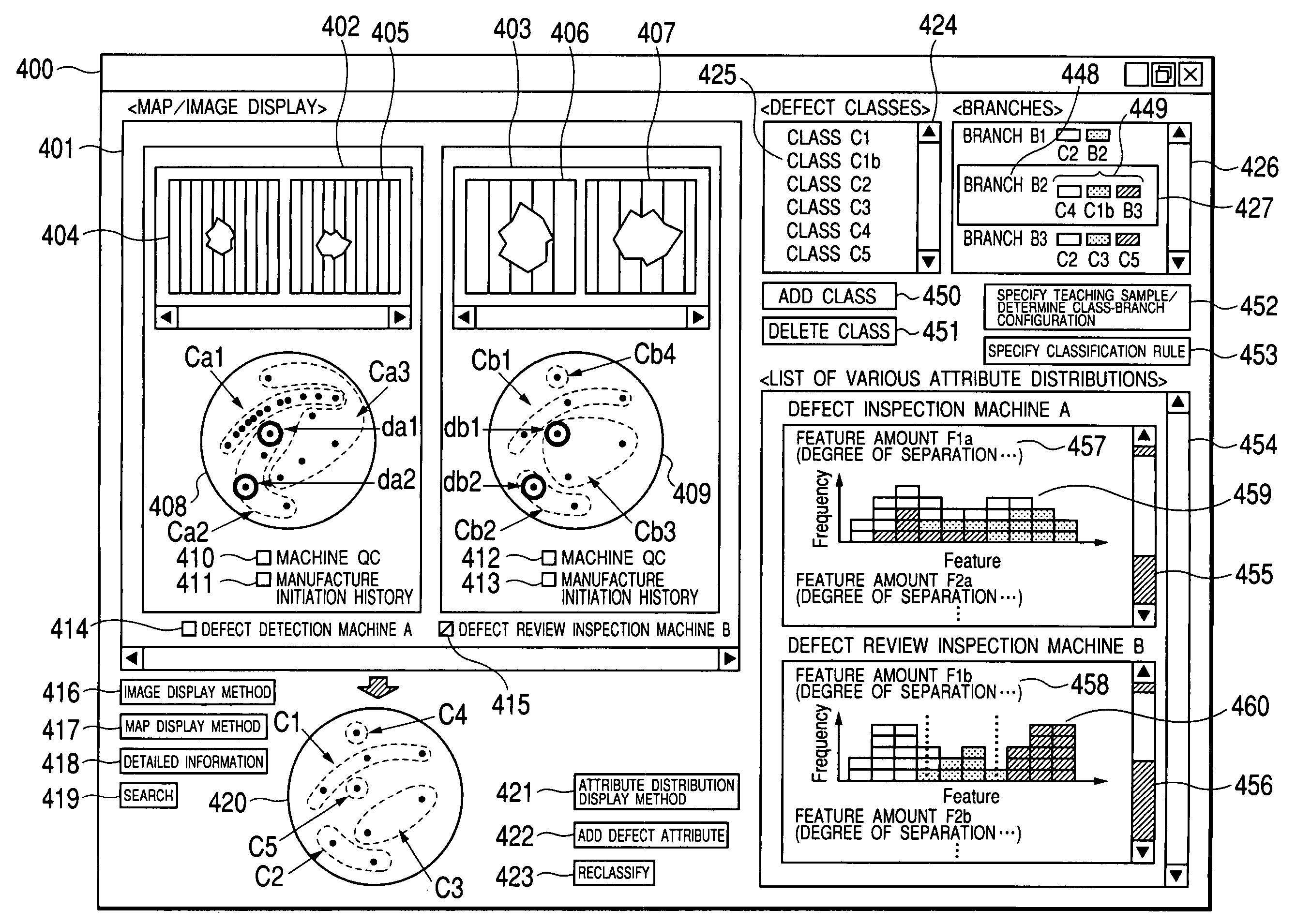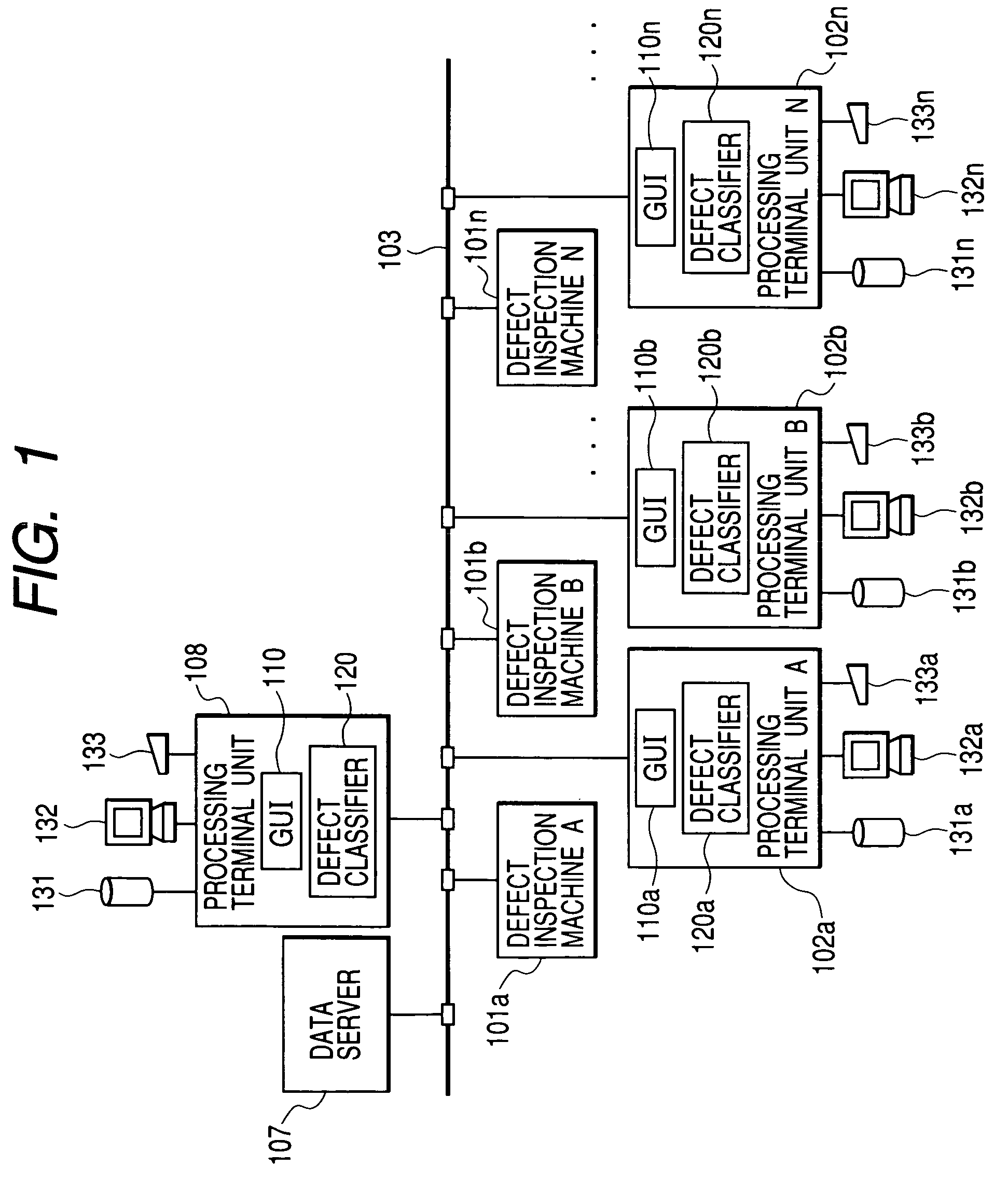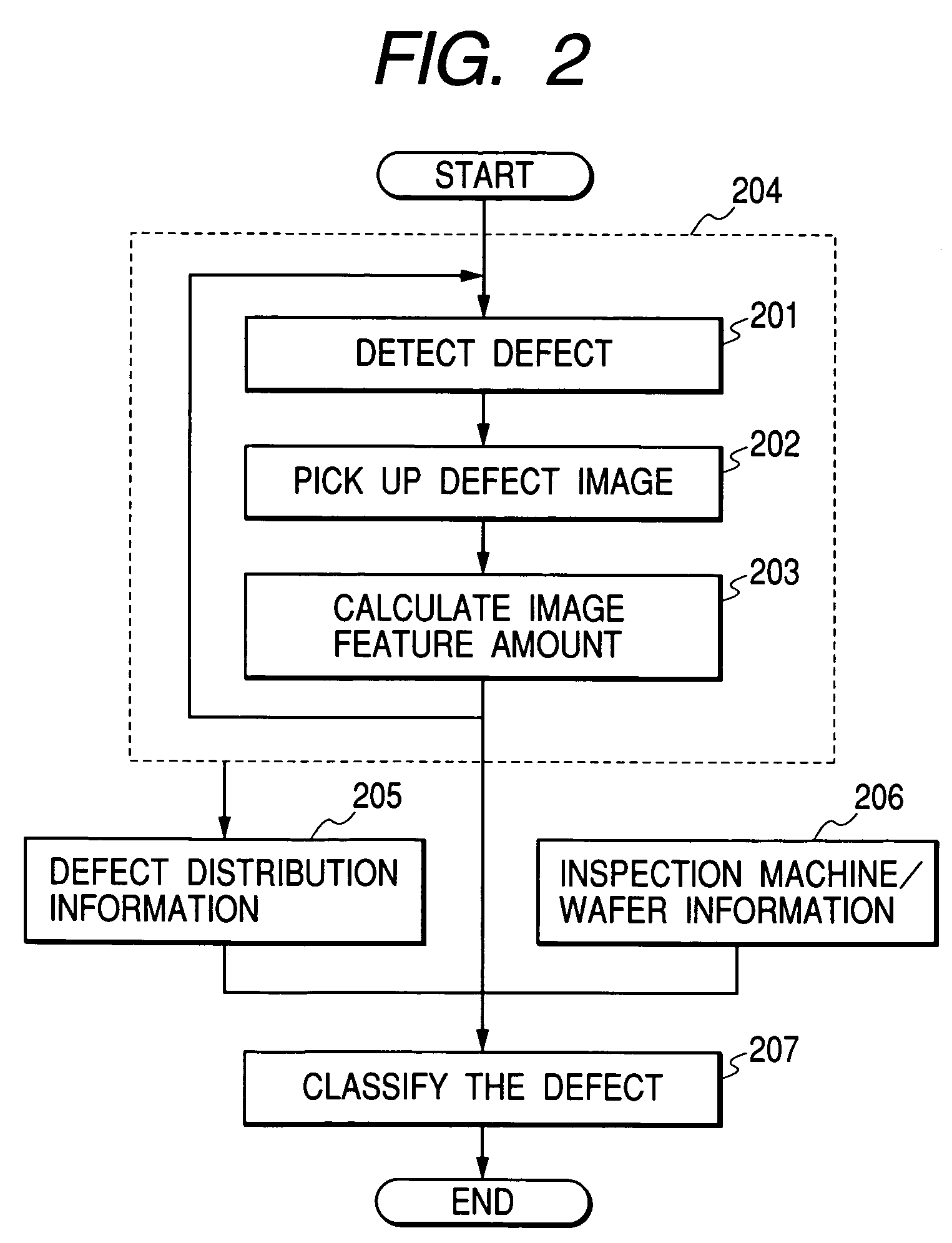Method of classifying defects using multiple inspection machines
a defect detection machine and defect technology, applied in the field of multiple inspection machine method, can solve the problems of not being able to flexibly respond, not being able to use at the time of production process startup, and not being able to conduct a fine inspection on all defect samples detected by the defect detection machine, etc., to achieve the effect of adequate user suppor
- Summary
- Abstract
- Description
- Claims
- Application Information
AI Technical Summary
Benefits of technology
Problems solved by technology
Method used
Image
Examples
first embodiment
Generation of a Defect Classifier 120 According to the Present Invention in a Defect Inspection Machine
[0048]The first embodiment will now be described. The first embodiment relates to automatic classification of foreign matter and defects on a semiconductor wafer (hereinafter collectively referred to as defects except in some special cases). In addition, it mainly comprises a method of a simultaneous review of inspection information that is obtained from at least one defect inspection machine 101 and a method of generating the defect classifier 120 according to the present invention, which is used with a defect inspection machine 101 or terminal processing unit 102 / 108. The subsequent description assumes that the defect classifier 102 is generated by one of processing terminal units 102a to 102n or a processing terminal unit 108. Therefore, in FIG. 1, each processing terminal unit 102 / 108 comprises calculation means, which has a function of a GUI 110 and a function of generating th...
second embodiment
Generation of a Defect Classifier 120 According to the Present Invention in a Defect Review Machine
[0123]The second embodiment will now be described. The method of generating the defect classifier 120 according to the present invention for one defect inspection machine has been described in conjunction with the first embodiment. However, when a combination inspection is conducted with a plurality of defect inspection machines, it is necessary to determine what classification classes are to be assigned for each defect inspection machine and determine the method of generating the defect classifier 120 according to the present invention, which realizes defect classification for each defect inspection machine. If, for instance, defect classes that cannot be handled by the defect detection machine can be subjected to fine classification by the defect review machine to accomplish hierarchical defect classification in a situation where a defect detection machine and defect review machine a...
third embodiment
Generation of a Defect Classifier 120 According to the Present Invention in a Defect Detection Machine (Regular Defect Inspection Machine)
[0140]The third embodiment will now be described. The following description relates to a method for determining the defect classes in a defect detection machine and the defect classifier as well as a review sampling method, which are to be employed in accordance with the fine inspection result produced by a defect review machine for the purpose of achieving effective defect classification in the defect review machine.
[0141]For effective defect classification in the defect review machine, it is preferred that the defect classification standard used in the defect detection machine be similar to the defect classification standard used in the defect review machine. If defect classes that cannot be handled by the defect detection machine can be handled by the defect review machine for hierarchical classification which is fine classification (detailed c...
PUM
 Login to View More
Login to View More Abstract
Description
Claims
Application Information
 Login to View More
Login to View More - R&D
- Intellectual Property
- Life Sciences
- Materials
- Tech Scout
- Unparalleled Data Quality
- Higher Quality Content
- 60% Fewer Hallucinations
Browse by: Latest US Patents, China's latest patents, Technical Efficacy Thesaurus, Application Domain, Technology Topic, Popular Technical Reports.
© 2025 PatSnap. All rights reserved.Legal|Privacy policy|Modern Slavery Act Transparency Statement|Sitemap|About US| Contact US: help@patsnap.com



